The use of KPIs (Key Performance Indicators) to measure a sales team’s growth or contraction have been used for many years. Some examples include gross sales, net revenue, products sold, and others that demonstrate how a company has succeeded (or not) through a particular period (quarter or year).
But these particular KPIs are actually lagging indicators—so called because they only reflect what has been done. It is rather like the final score of a football game that’s already been played—by the time lagging indicators are recorded, it is too late to change anything. Hence, KPIs are needed which help predict what those lagging indicators will be. These are called leading indicators. As we covered in the last blog in this series, leading indicators are used much too infrequently in sales. We discussed what they should be and how they should be used.
You must pay attention to both leading and lagging indicators. You can’t do so separately, however, as you’ll never be able to analyze properly. Correct analysis requires a skillful combination. The combining of leading and lagging indicators give you a full picture of your operation. Moreover, the combination gives you a comprehensive look at your risk, and allows you to make changes to improve the scene before your lagging indicators come into effect.
You should be able to utilize your leading indicators to show how your lagging indicators are going to appear, if nothing changes between now and the time of your lagging indicators. For example, if you add up the value of your opportunities in the pipeline, the percentage chances of their making it through, the rankings of each deal, and other leading factors, you see that, if all goes according to plan, you’ll have $1.5 million for the quarter. If you add up all your leading indicators and see that you’re falling short of your target, you then have time to do something about it. For example:
- Get more leads into the pipeline
- Take steps to raise lead-to-opportunity conversion rates
- Coach and mentor your reps to raise closing ratios
- Make sure you have no unnecessary activities or tasks
- Make sure all necessary activities and tasks are being done
- Monitor your sales process to makes sure it is efficient
Tracking Leading and Lagging
Now, it’s one thing to decide what your leading and lagging indicators should be. It’s quite another to begin tracking them in such a way that you can actually use them to gain accurate sales performance insights, and skillfully manage.
For example, you could have all of your leading indicators arranged in a spreadsheet, and either have someone who is constantly updating it, or share it so that reps can update it with their own figures.
The basic issue with such an application—aside from the fact that someone can forget to update it—is that none of them present an instant, visual insight into how all of your leading indicators add up to your lagging indicators, moment to moment, day to day and week to week.
The traditional CRM approach has been more or less to ”track everything”—primarily the reps, their calls, their progress, their activities and so on. Reps entered their contact, account and activity data.
But what should a CRM solution really be? What should it show a company? The answer: Where sales has been, where they’re currently at, and where they’re going. In order for a CRM to do that, it must function with leading and lagging indicators, so it provides real insight.
No CRM has truly addressed this issue—until now.
Pipeliner CRM interweaves leading and lagging indicators through its totally unique instant dynamic visualization. Without such a powerful system, you’re very likely waiting for metrics that you need to manage right now. Here’s how it breaks down:
Instant: Means it’s happening in the present time, right now. If you get a report a week later, it does you no good whatsoever.
Dynamic: Means that your analysis comes about through the filter you create, providing the precise metrics you require.
Visualization: The data is provided in completely visual form–and we’re the only CRM to do that.
Here are examples of Pipeliner’s instant dynamic visualization features:
Pipeline View
Unlike any other CRM solution, leading and lagging indicators are instantly and visually displayed. It’s all right there before you, starting with the main Pipeline View.
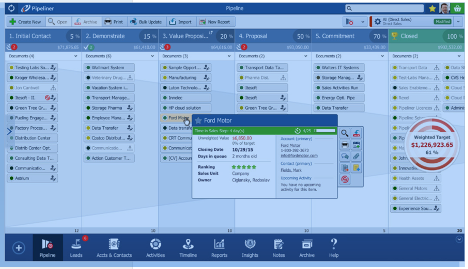
Right here you can see how many leads are available, how many opportunities are in each stage of the pipeline, and how many are overdue (per the average length of time for each stage). Your primary leading indicators are right there.
Target
On the right-hand side, the target is always visible, showing your primary lagging indicators, and how they are affected by all the leading indicators as they now stand.
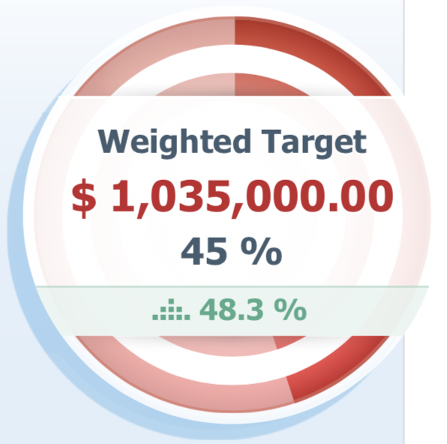
Archive
In Pipeliner, the most important lagging indicator is something not available in any other CRM: the Archive. The Pipeliner CRM Archive is arranged exactly the same as the active pipeline view. Leads and opportunities contain all information present when they were archived—including documents, emails, notes, social media interactions, tasks, and activities.
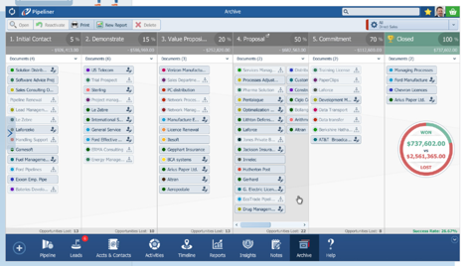
An in-depth analysis can be done right in the Archive of lost deals—with the same degree of detail that can be done with current opportunities. With Pipeliner’s new Multi-KPI feature, which is available both in the main Pipeline View and in the Archive, you can compare 2 different values (for example Revenue and Units Sold) or 2 different time periods. There has never been an analysis tool like the Pipeliner CRM Archive.
Pipeliner’s other features, such as filters, ranking, account view, and timeline all display leading and lagging indicators in various configurations, allowing you to instantly see how your leading indicators add up to your lagging indicators.
Sales Performance Insights
As you can see, it’s not just the indicators, but how they are displayed and used. And with Pipeliner, that view has now gained another major improvement with its all-new feature called Sales Performance Insights. With Sales Performance Insights a sales leader or sales representative can see, at a glance, how various leading and lagging indicators have been combined so far for a sales unit, for reps as compared with other reps, and for territories as compared with others. Not only can reps be compared, but so can various indicators for those reps.
Leading indicators include items such as created leads/opportunities, created accounts, and won opportunities. Lagging indicators include won opportunities, lost opportunities, won amount and lost amount.
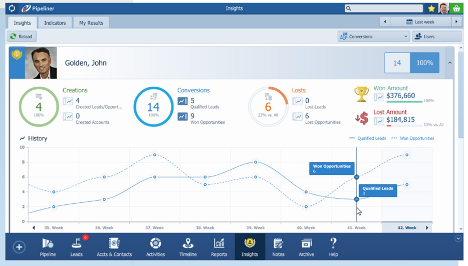
Deeper Meaning
In our ebook The Principles of Entrepreneurs: How Precise Economic Philosophy Empowers Sales we explore the major principles that make up the economic landscape in which salespeople operate. Within these various principles, we can readily see how each reflects either a leading or a lagging indicator—or, in some cases, both.
Sunk Costs
Sunk costs are costs that your company has already invested in products or services that must now be profitably recovered through your sales efforts. These are costs that your company has already “sunk” into raw materials, development or production and, where applicable, storage. They are fixed costs because the money has already been spent; they will not fluctuate.
You have probably already guessed that sunk costs are lagging indicators—as by the time anyone knows what a sunk cost is, it has already been spent.
With Pipeliner, you can visually see sunk costs with ease. For example, in the Archive feature, described above, you can create a filter that compares product performance and sunk cost of a previous period to the current one. With such comparisons you can make a rational decision about that product, continuing to sell it or taking it out of the product line.
You can also compare sunk costs of one product against another or others, so that similar decisions can be reached.
Opportunity Cost
Opportunity cost is the investment your company must make to achieve a sale, and it has a bearing on every company activity associated with a sales cycle.
In one respect opportunity cost is also a lagging indicator, because in the end, when the deal is won or lost, one can readily see what the opportunity cost was.
At the same time, it could be used as a leading indicator. A company often knows the range in which an opportunity cost is profitable, and when it becomes too much. Simply monitoring the opportunity cost as the opportunity moves through the pipeline will give a company an indication of how profitable that deal will turn out to be if won.
With Pipeliner, you can simply look at the duration of an opportunity through your entire pipeline, which of course is a major part of your opportunity cost. How much as the company invested in the opportunity, against the time it takes to sell? Pipeliner provides instant, visual answers to such questions.
Subjective Value
Subjective value is an extremely important principle in economics and in sales: it means the perceived value of your product or service in the mind of the prospect. It doesn’t matter how high a price or how big a profit margin—if a prospect doesn’t perceive great value in a product or service, it won’t sell.
Subjective value would be a leading indicator. If you know that the value of your product or service is high in the mind of the prospect, your chances of a sale are much greater.
Utilizing Pipeliner, there is a fast, easy way to know if your product or service has a great subjective value—and that is its speed through the pipeline. If it’s moving through the pipeline swiftly, it’s got a high subjective value. If a majority are dropping off, you’ve got a low subjective value.
Comparative Advantage
In sales, comparative advantage would mean optimizing a sales force based on differing strengths of salespeople.
Salespeople generally have differing strengths. Some will better “hunters”—those who are great at finding and bringing in new opportunities. Another might do well at being a “farmer”—nurturing a sale toward a close. And of course there are the closers, who excel at bringing deals through the door.
You could look at your sales rep placement as leading indicators—if you have your strength in the right place, it’s another indicator that your sales are going to improve.
Utilizing Pipeliner’s Performance Insights functionality and evaluating sales performance, you can easily see where you’ve placed reps correctly.
Sustainable Value
Sustainable value describes a product or service that not only benefits the developer and seller of that product, but the customer, the community, and society as well. It is an extremely important principle in economics, and also in sales. Ultimately it is only products and services with true sustainable value that will last—products that are innately destructive in the end must fail.
A high sustainable value for a product or service, estimated on its benefit to the user, customer, and even society, is another leading indicator of a company and sales force’s success. The greater the sustainable value, the more will be the continued demand.
With Pipeliner, you can pinpoint a product’s sustainable value by its renewal rate. If your renewal rate is high, your product or service obviously has a high sustainable value. Conversely, if the product has a high churn rate, the sustainable value is missing for the client.
For overall sales management and for calculating risk, make sure you take both leading and lagging KPIs fully into account.



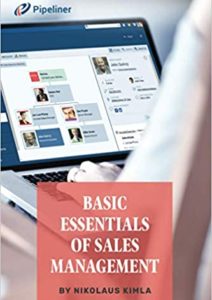
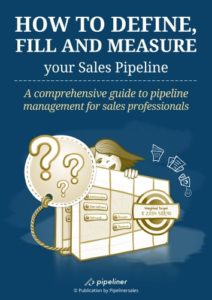

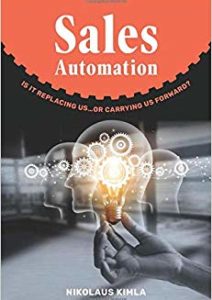


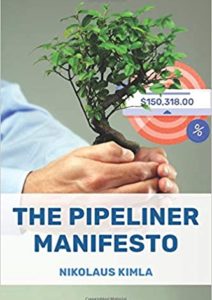

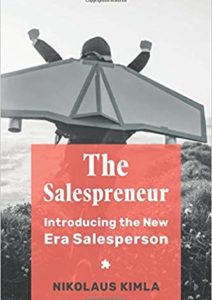
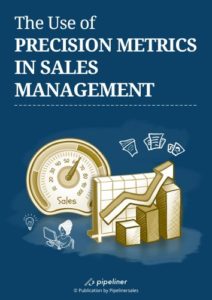


Comments